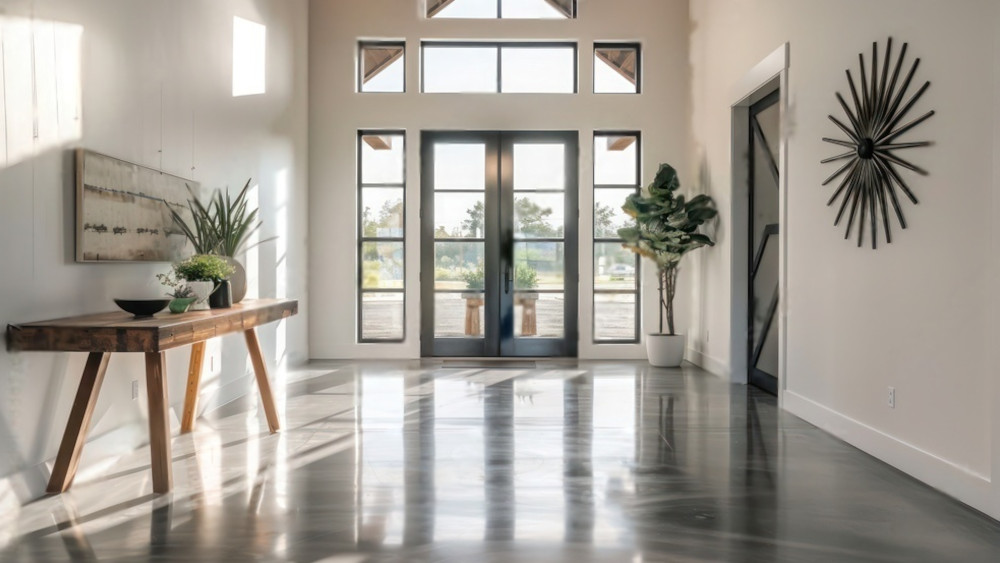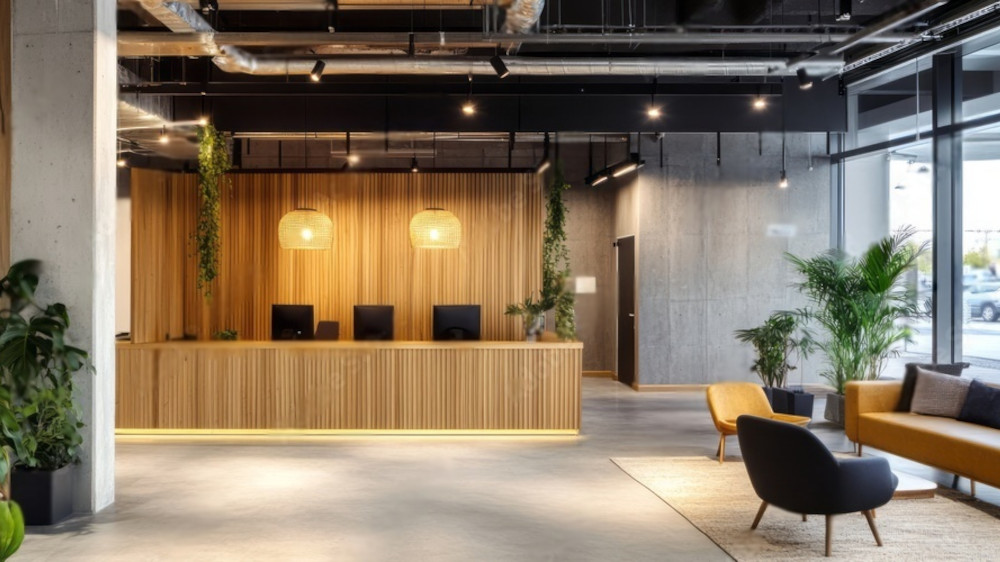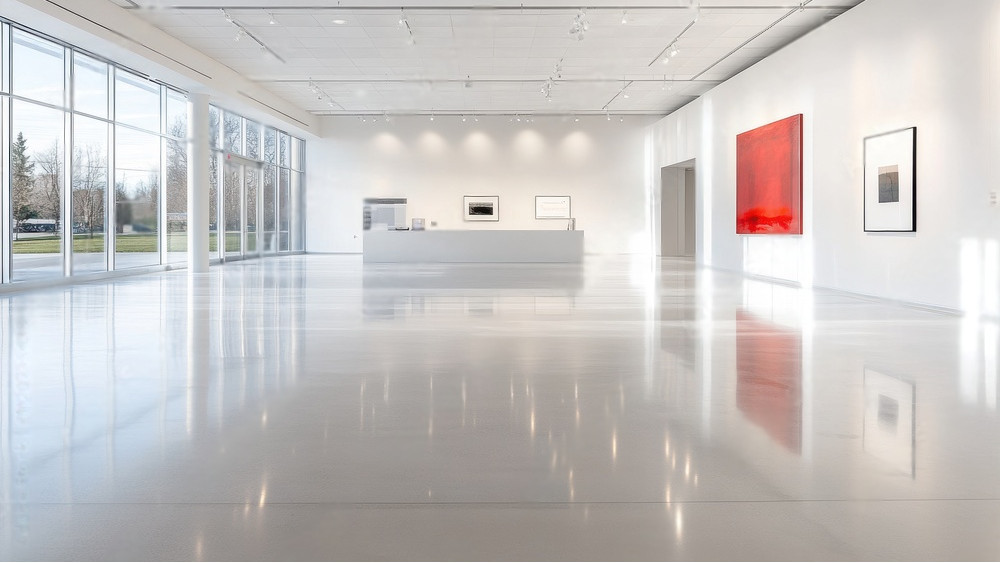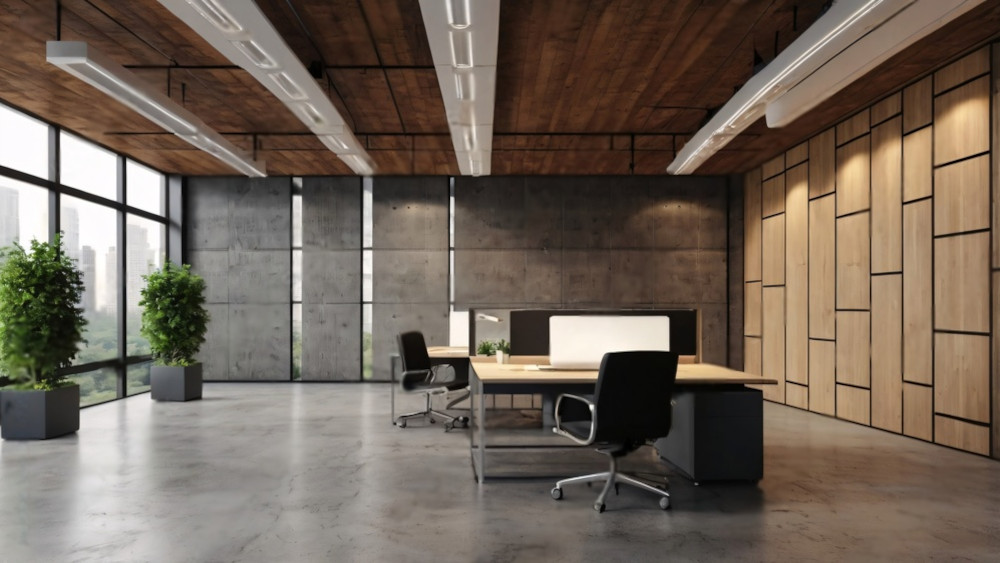When your concrete floors start to look tired, cracked, or outdated, it’s tempting to think the only solution is a full replacement. But in New Zealand, more homeowners and businesses are discovering that concrete grinding is a smarter, more sustainable, and far less disruptive alternative. Whether you’re renovating a classic villa in Auckland, upgrading a Wellington office, or modernising a Christchurch café, concrete grinding and polishing can transform your existing slab into a stunning, durable surface—without the cost and hassle of demolition.
This guide explains why concrete grinding is the best floor replacement alternative, how it works, and what it means for your next renovation or new build.
Concrete grinding is a process that uses industrial-grade diamond-tipped grinders to smooth, level, and restore existing concrete surfaces. It removes imperfections, old coatings, stains, and minor damage, preparing the floor for a polished finish or new surface treatment.

Replacing a concrete floor involves demolition, removal, disposal, new slab pouring, curing, and finishing. This process is expensive, time-consuming, and creates significant waste. In contrast, concrete grinding works with your existing floor, saving money and reducing environmental impact.
| Feature | Concrete Grinding & Polishing | Full Floor Replacement |
|---|---|---|
| Cost | Lower | Higher |
| Project Time | Fast (days) | Slow (weeks) |
| Waste Produced | Minimal | High (landfill) |
| Disruption | Low (no demolition) | High (noise, dust, removal) |
| Sustainability | Reuses existing slab | New materials required |
| Maintenance | Easy, low-cost | Varies by material |
| Longevity | 20+ years with care | 10–20 years (typical) |
| Aesthetic Options | Custom finishes, colours | Limited by material |
| NZ Green Building Council | Eco-friendly option | Higher carbon footprint |
Concrete grinding is one of the most affordable ways to upgrade home concrete floors in NZ. You avoid the high costs of demolition, skip tile or carpet removal, and get a modern, seamless finish that lasts.
Grinding and polishing can often be completed in a matter of days, not weeks. This means less downtime for your family or business, and you can move back in sooner.
By reusing your existing concrete slab, you reduce landfill waste and lower your renovation’s carbon footprint. Many NZ homeowners are choosing polished concrete for houses as a green building material.
Polished concrete floors offer a sleek, minimalist look that suits both classic and contemporary interiors. Choose from matte, gloss, or exposed aggregate finishes, and add decorative touches for a custom result.
Polished concrete is easy to clean, resists stains and moisture, and stands up to heavy use—perfect for kitchens, bathrooms, garages, and high-traffic living areas.

For businesses, downtime means lost revenue. Concrete grinding allows for fast upgrades with minimal mess, making it ideal for retail stores, offices, showrooms, and warehouses.
Polished office floors, showroom concrete flooring, and factory floor grinding services deliver surfaces that are easy to clean, resistant to wear, and safe for staff and customers.
From slip-resistant finishes for restaurant dining floors to high-gloss car showroom concrete floors, grinding and polishing can be tailored to your needs.
While DIY concrete grinding is possible for small areas, professional services use industrial floor grinders, vacuum-assisted machines for low dust, and expert techniques for a flawless result. For most NZ homes and businesses, hiring a certified concrete polisher is the best way to ensure safety, quality, and longevity.

Polished concrete floors are known for their durability and low maintenance, but a little care goes a long way in keeping them looking their best. Here’s a practical guide for New Zealand homeowners and businesses to ensure your polished concrete floors stay clean, safe, and beautiful for years to come.
Tip: Regular, gentle cleaning and prompt spill management will keep your polished concrete floors looking as good as new, whether in a family home, office, or busy restaurant.
Maintaining the shine and performance of polished concrete floors in New Zealand doesn’t require expensive treatments—just consistency and the right approach. Start with regular sweeping to prevent dust and grit buildup, then follow with a damp mop using a pH-neutral cleaner to keep the surface fresh without harming the seal. In high-use areas like cafes, offices, or entryways, staying on top of cleaning is especially important to avoid stains or surface dullness. Avoid harsh chemicals or wax, which can do more harm than good. If your floor starts looking worn or loses its reflective finish, it might be time to schedule a professional reseal or polish. A trusted NZ floor grinding expert can restore the surface efficiently and extend the life of your investment. With basic care and occasional professional help, your polished concrete floors can retain their sleek, modern appearance for decades.
| Flooring Option | Cost | Durability | Maintenance | Sustainability | Aesthetics | Downtime |
|---|---|---|---|---|---|---|
| Polished Concrete | $$ | 20+ years | Low | High | Modern | Low |
| Vinyl/Carpet | $$ | 5–10 years | Medium | Low | Varies | Medium |
| Tiles | $$$ | 10–20 years | Medium | Medium | Classic | High |
| Epoxy Coating | $$ | 5–10 years | Medium | Medium | Glossy | Medium |
| Timber/Engineered | $$$$ | 10–20 years | High | Low | Warm | High |
Polished concrete stands out for its balance of cost, durability, sustainability, and style—especially when you can restore your existing floor instead of replacing it.

Polished concrete isn’t just practical—it’s also one of the most versatile and stylish flooring options available in New Zealand. Here are some of the top design trends and ideas to inspire your next project:
Trend Tip: Light-reflective finishes, matte vs gloss options, and even metallic or terrazzo-style effects are all possible with modern concrete grinding and polishing techniques.
Ready to explore your options?
Talk to your local NZ concrete floor experts for samples, inspiration, and advice on the best design for your space.
Concrete grinding is the smart, sustainable alternative to floor replacement for New Zealand homes and businesses. It saves money, reduces waste, and delivers a modern, durable finish that stands the test of time. Whether you’re renovating, building new, or upgrading a commercial space, polished concrete floors offer unmatched value, style, and performance.
Ready to transform your floors?
Contact Polished Concrete Floors—New Zealand’s trusted experts in concrete grinding and polishing. Request a free quote, book a site visit, or talk to our team for advice on the best floor restoration solution for your property.
Grinding and polishing a concrete floor offers a remarkable transformation, turning a basic cement surface into a sleek, architectural feature. This process not only enhances the visual appeal but also increases the floor’s durability and longevity. Polished concrete is bacteria-resistant, making it a hygienic choice for homes, commercial kitchens, and even public spaces like a church. The smooth, sealed surface is easy to clean and maintain, reducing the need for harsh chemicals and frequent deep cleaning.
Another key benefit is the energy-efficient nature of polished concrete floors. Their reflective finish maximises natural and artificial light, reducing the need for additional lighting and helping to lower energy costs. Unlike hardwood or carpet, polished concrete doesn’t trap dust, allergens, or glue residues, making it a healthier option for indoor environments. The use of a densifier during the polishing process further strengthens the cementitious substrate, ensuring the floor stands up to heavy foot traffic and daily wear.
A concrete grinder is an essential tool for any builder or renovator looking to refurbish or prepare a cement floor. Its primary purpose is to smooth out imperfections, remove old paint or glue, and create a level substrate ready for finishing. The grinder uses rotating diamond segments to abrade the surface, gradually refining it from coarse to fine, depending on the desired finish. This process is crucial for both new construction and renewal projects, ensuring a flawless base for overlays, sealers, or polished finishes.
The operation of a concrete grinder involves several stages, starting with aggressive grinding to remove surface flaws and progressing to finer grits for a polished look. During this process, a densifier may be applied to harden the cementitious material, making it more resistant to wear and staining. Professional floor grinding not only prepares the floor for further treatment but also exposes the natural beauty of the cement, allowing for a range of architectural finishes that can suit any design vision.
Yes, grinding is a highly effective method to level uneven concrete floors and address surface imperfections. Whether you’re working on a garage, driveway, or interior space, a concrete grinder can remove high spots and create a smooth, even substrate. This is especially important in older buildings or during a renewal project, where settling or previous repairs may have left the floor uneven. By grinding the surface, you can prepare it for overlays, paint, or a polished finish, ensuring a professional result.
Crack repair is also possible as part of the grinding process. Cracks are typically filled with a cementitious repair compound before grinding begins. Once the repairs are complete, the floor is ground and polished to blend the fixed areas seamlessly with the rest of the surface. This approach not only improves the appearance but also restores the structural integrity of the floor, making it suitable for high-traffic areas or even heavy-duty spaces like a church hall or commercial kitchen.
While polished concrete is a popular choice for its durability and modern look, there are several alternatives to consider. Hardwood flooring remains a classic option, offering warmth and natural beauty, though it may require more maintenance and isn’t as bacteria-resistant as polished concrete. Tiles, including ceramic and porcelain, are another common alternative, providing a wide range of design options and excellent water resistance, making them suitable for bathrooms and kitchens.
Epoxy overlays are also gaining popularity, especially in garages and commercial spaces, due to their seamless finish and resistance to chemicals and stains. For those seeking a softer feel underfoot, vinyl or laminate flooring can mimic the look of wood or stone while being easier to install and maintain. Each alternative has its own set of benefits and considerations, so it’s important to consult with a builder or flooring specialist to determine the best fit for your specific needs and the existing substrate.
Polished concrete floors can significantly increase the value of your property by offering a blend of style, durability, and low maintenance. Their modern, architectural appearance appeals to buyers and tenants looking for a contemporary, energy-efficient home or business space. The reflective surface of polished concrete enhances natural light, making rooms feel brighter and more spacious, which is a desirable feature in both residential and commercial properties.
In addition to their visual appeal, polished concrete floors are long-lasting and easy to maintain, reducing the need for costly repairs or replacement. Their bacteria-resistant properties make them ideal for kitchens, bathrooms, and public spaces, while their ability to withstand heavy use makes them suitable for high-traffic areas like a driveway or church hall. By investing in the transformation of your cement floor with grinding and polishing, you not only refurbish the space but also create a lasting impression that can set your property apart in the market.